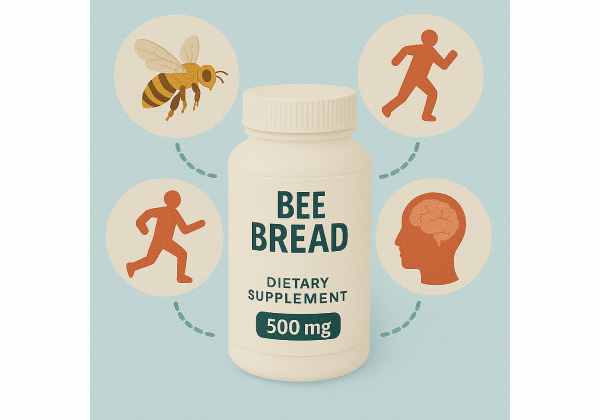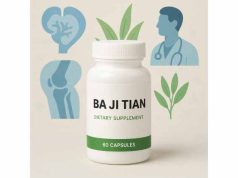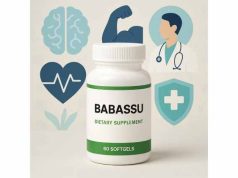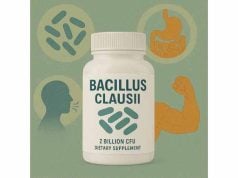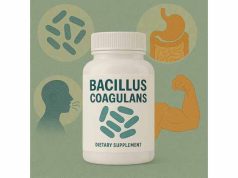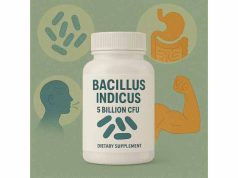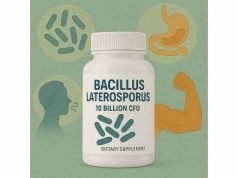What if a natural food made by bees could boost your energy, support immunity, and nourish your body at the cellular level? Bee bread—a unique superfood formed by bees from pollen, honey, and their own beneficial enzymes—has fascinated researchers and wellness seekers alike. This fermented bee product is celebrated for its concentrated vitamins, essential amino acids, antioxidants, and bioavailable minerals, offering more than ordinary bee pollen. Whether you’re interested in stamina, recovery, gut health, or simply optimizing your nutrition, bee bread’s blend of science and tradition makes it a supplement worth exploring. In this comprehensive guide, we’ll reveal what bee bread is, how it works in the body, its evidence-backed benefits, usage, safe dosages, and common questions—helping you get the most from this remarkable bee gift.
Key Takeaways
- Bee bread is a fermented mix of pollen, honey, and bee enzymes, rich in nutrients and beneficial compounds.
- May support immune function, physical stamina, gut health, and recovery thanks to its unique nutritional profile.
- Absorbed more efficiently than plain pollen due to natural fermentation and enzyme action.
- Generally safe for most adults, but those with bee or pollen allergies should avoid it.
- Dosage is typically 1–2 teaspoons daily, ideally under guidance for sensitive groups.
Table of Contents
- Bee Bread: What It Is and How It’s Made by Bees
- How Bee Bread Works: Fermentation, Nutrition, and Biological Effects
- Bee Bread Health Benefits: Top Evidence and Traditional Uses
- Bee Bread Safety, Allergies, and Potential Side Effects
- How to Take Bee Bread: Dosage, Timing, and Best Practices
- Bee Bread FAQ: Most Asked Questions Answered
Bee Bread: What It Is and How It’s Made by Bees
Bee bread is one of nature’s most intriguing functional foods—created not by humans, but by bees themselves. It stands apart from bee pollen and honey due to its unique origin, composition, and remarkable nutrient density.
What Is Bee Bread?
- Bee bread is a naturally fermented mixture of flower pollen, nectar (or honey), and bee salivary enzymes, stored and aged in honeycomb cells.
- The fermentation process is initiated by the bees, who pack pollen into cells, add honey and enzymes, and seal the mixture with wax.
- Over several weeks, lactic acid bacteria and wild yeasts ferment the pollen, breaking down tough plant cell walls and enhancing nutrient availability.
Bee Bread vs. Bee Pollen: What’s the Difference?
- Bee pollen is the raw, unfermented pollen collected by bees from flowers.
- Bee bread is bee pollen that has been enzymatically and microbially fermented by the bees, making it more digestible and nutrient-dense.
- The fermentation process increases bioavailability of amino acids, vitamins, and minerals and adds beneficial compounds like lactic acid and natural probiotics.
Key Components of Bee Bread
- Proteins and amino acids: Complete protein source with all essential amino acids.
- Vitamins: Especially rich in B vitamins (B1, B2, B6, folic acid), vitamin K, vitamin E, and carotenoids.
- Minerals: Magnesium, potassium, iron, calcium, phosphorus, and trace minerals.
- Enzymes: Naturally present due to bee secretions and fermentation.
- Fatty acids: Includes omega-3 and omega-6 essential fats.
- Polyphenols and antioxidants: Powerful plant compounds that help combat oxidative stress.
- Beneficial microbes: Lactic acid bacteria and yeasts that support gut health.
The Role of Bee Bread in the Hive
- Primary food for bee larvae and the queen: Essential for growth, development, and hive vitality.
- Sustains bees through lean periods: Bee bread’s nutrient density and preservation mean it can feed the colony when fresh pollen is scarce.
How Is Bee Bread Harvested for Human Use?
- Beekeepers extract bee bread by gently removing it from honeycomb cells (often with specialized tools), then purifying and drying it for supplement use.
- Quality varies by region, floral source, and harvesting technique—look for raw, minimally processed bee bread for the highest potency.
Historical and Cultural Uses
- Ancient civilizations prized bee bread as a restorative and energizing food.
- Used traditionally to enhance fertility, stamina, and healing in folk medicine systems of Eastern Europe, Asia, and Africa.
In Summary
Bee bread’s origins—beginning as pollen, transformed by bees through natural fermentation—give it a unique set of nutritional advantages. This makes it not only a cornerstone of bee nutrition but a valuable superfood for humans seeking holistic health support.
How Bee Bread Works: Fermentation, Nutrition, and Biological Effects
Bee bread is more than just a mix of pollen and honey—it’s a biologically active, living food with a host of complex processes behind its benefits. Understanding the science of fermentation and bee bread’s impact on the body reveals why it is more than the sum of its parts.
The Science of Bee Bread Fermentation
- Fermentation by bees: Bees add honey and specific enzymes to flower pollen, then pack and seal it in the hive’s honeycomb. This environment fosters the growth of lactic acid bacteria and wild yeasts.
- Lactic acid fermentation: Microbial activity lowers the pH, preserves the bee bread, and produces lactic acid—a natural preservative that’s also found in yogurt and other fermented foods.
- Cell wall breakdown: The tough outer shell of pollen grains is digested by microbes and bee enzymes, releasing proteins, vitamins, and phytonutrients for easier absorption by bees—and, by extension, humans.
Nutritional and Biological Highlights
- Amino acid boost: Fermentation increases the amount and bioavailability of essential amino acids, making bee bread a potent source of plant protein.
- Enhanced vitamins: The process concentrates B vitamins (B1, B2, B3, B6, folic acid), vitamin K, and vitamin E—important for energy, immunity, and cellular health.
- Probiotic effect: Bee bread contains live lactic acid bacteria, which can support gut flora and healthy digestion.
- Antioxidant power: Polyphenols, carotenoids, and flavonoids combat free radicals and support immune defense.
- Mineral absorption: Fermentation liberates minerals from the pollen matrix, boosting absorption of magnesium, calcium, iron, and others.
How Does Bee Bread Work in the Human Body?
- Rapid absorption: The breakdown of pollen’s tough cell walls allows bee bread’s nutrients to be readily absorbed in the digestive tract.
- Gut health support: Lactic acid bacteria and prebiotic fibers nourish the gut microbiome.
- Sustained energy: Its blend of proteins, B vitamins, and minerals helps stabilize blood sugar and energy levels over time.
- Cellular protection: Antioxidants in bee bread help reduce oxidative stress throughout the body, protecting tissues from damage.
Key Differences from Bee Pollen
- Bee pollen can be hard to digest for some people because of its protective coating.
- Bee bread’s fermentation “pre-digests” nutrients, making them easier on the gut and more bioavailable.
Synergy with Other Natural Supplements
- Bee bread pairs well with raw honey, propolis, and royal jelly for comprehensive bee-derived wellness support.
- It can also complement plant-based diets, providing missing micronutrients and protein.
Summary Table: Bee Bread Nutrition at a Glance
| Component | Function/Benefit |
|---|---|
| Amino acids | Muscle growth, repair, energy |
| B vitamins | Energy production, nerve support |
| Minerals | Bone, heart, metabolic health |
| Antioxidants | Immune defense, tissue repair |
| Probiotics | Gut and immune health |
Bee bread’s potent blend of nutrition and bioactive compounds offers advantages over many other natural supplements, especially for those seeking a whole-food, bee-powered boost.
Bee Bread Health Benefits: Top Evidence and Traditional Uses
Bee bread’s reputation as a superfood is grounded in centuries of folk wisdom—and increasingly supported by modern scientific research. Its unique nutritional matrix translates into benefits for multiple body systems. Let’s break down the evidence-backed and traditional uses that make bee bread so valuable.
1. Immune System Support
- Rich in antioxidants: Polyphenols, carotenoids, and flavonoids scavenge free radicals and bolster immune cells.
- Probiotics for defense: Lactic acid bacteria may help regulate immune response and protect against pathogens.
- Zinc and selenium: Critical minerals in bee bread that further enhance immunity.
2. Increased Energy and Vitality
- B vitamins and protein: Improve energy production, fight fatigue, and aid in post-exercise recovery.
- Sustained release: Nutrients are absorbed gradually due to their complex matrix, promoting stable energy.
3. Gut and Digestive Health
- Probiotic effect: Supports beneficial gut flora, balances digestion, and may relieve minor bloating.
- Prebiotic fibers: Feed good bacteria, enhancing the gut barrier and supporting regularity.
4. Physical Stamina and Recovery
- Amino acids: Aid muscle repair and reduce recovery time after physical activity.
- Natural adaptogen: Traditional use includes improved endurance, mental clarity, and resistance to stress.
5. Hormonal Balance and Fertility
- Micronutrient density: Bee bread’s array of vitamins and minerals supports hormone production and reproductive health.
- Traditional use: Consumed for fertility and vitality by both men and women in many cultures.
6. Skin and Tissue Health
- Antioxidants and vitamin E: Promote collagen formation and protect skin from environmental stress.
- Cellular renewal: Amino acids and minerals support wound healing and healthy skin turnover.
7. Support for Aging and Longevity
- Antioxidant load: Fights oxidative damage that contributes to aging.
- Nutritional completeness: Supplies key nutrients often lacking in older adults’ diets.
Who May Benefit Most from Bee Bread?
- Athletes, active individuals, and those recovering from illness or stress
- People seeking natural immune and energy support
- Older adults looking to maintain vitality and nutrient status
- Anyone with a nutrient-deficient diet, such as vegetarians or vegans
Noteworthy Traditional Uses
- As a restorative for the elderly, weak, or recovering
- To increase milk supply in nursing mothers (folk use)
- As a “spring tonic” for renewal and detoxification
Limitations and What Bee Bread Cannot Do
- Not a replacement for a balanced diet: Should be used as a supplement, not a substitute for varied whole foods.
- Not a miracle cure: While it supports many body systems, it cannot treat or cure specific diseases.
Summary Table: Main Benefits and Target Users
| Benefit | Best For |
|---|---|
| Immune support | Frequent colds, stress, aging |
| Stamina, energy | Athletes, fatigue, recovery |
| Gut health | Digestive imbalance, IBS |
| Skin health | Healing, anti-aging, vitality |
| Fertility | Men and women, preconception |
Bee bread is a powerful addition to modern wellness, blending ancient bee wisdom and cutting-edge nutrition to support health naturally.
Bee Bread Safety, Allergies, and Potential Side Effects
Bee bread is considered a safe and natural supplement for most healthy adults, but its potency and bee origins mean that certain groups should use caution or avoid it altogether. Understanding possible side effects, allergy risks, and how bee bread interacts with other supplements will help you use it confidently and responsibly.
Who Should Be Cautious with Bee Bread?
- People with pollen or bee allergies: Bee bread contains pollen proteins and bee-derived enzymes. Individuals allergic to pollen, bee venom, or bee products should not use bee bread, as it may trigger severe allergic reactions.
- Children under 12: While bee bread is nutrient-rich, safety data for young children is limited. Consult a pediatrician before use.
- Pregnant or breastfeeding women: There is insufficient research on bee bread’s effects during pregnancy and lactation. Avoid unless approved by your healthcare provider.
- Those on blood thinners or immune-modulating drugs: Bee bread’s vitamin K content and immune-active compounds may interact with certain medications.
- Autoimmune conditions: The immunostimulant properties may not be suitable for those with overactive immune systems without professional guidance.
Common Side Effects
Most adults tolerate bee bread well at recommended doses, but mild side effects can occur, especially in those new to bee products. Watch for:
- Mild digestive upset: Bloating, nausea, or loose stools, usually if too much is taken at once or when first introducing it.
- Allergic reactions: Symptoms include itching, hives, swelling of the face or throat, difficulty breathing, or rash. Seek emergency medical help immediately if any allergic symptoms occur.
- Mild headaches or dizziness: Rare, typically related to sensitivity or overdose.
Rare or Serious Side Effects
- Anaphylaxis: Severe allergy to bee or pollen proteins can result in rapid-onset, life-threatening reactions. This is rare but always a risk for allergic individuals.
- Infection risk from poor-quality products: Contaminated or improperly stored bee bread can introduce bacteria or mold. Always buy from reputable sources and ensure freshness.
Medication and Supplement Interactions
- Anticoagulants (blood thinners): The vitamin K in bee bread may interfere with medications like warfarin.
- Immunosuppressants: As bee bread may stimulate immune activity, it could counteract immunosuppressant medications.
- Other bee products: Combining with propolis, royal jelly, or bee pollen is generally safe for non-allergic adults, but monitor for cumulative effects or sensitivities.
How to Minimize Risks and Side Effects
- Start small: Begin with a small amount (e.g., 1/2 teaspoon daily) to gauge tolerance, especially if you’re new to bee products.
- Monitor for allergies: If you have a history of seasonal allergies, asthma, or hay fever, speak with a healthcare provider before using bee bread.
- Choose quality: Opt for raw, lab-tested, contaminant-free bee bread from reputable brands or local beekeepers.
- Avoid during acute illness: If you’re battling a severe infection or immune flare, pause all supplements unless your doctor advises otherwise.
Myths and Misunderstandings about Bee Bread Safety
- Myth: “Bee bread is 100% safe because it’s natural.”
Fact: Natural does not mean allergen-free or risk-free. Bee bread is highly bioactive and potent. - Myth: “Anyone can take bee bread for any condition.”
Fact: It’s not recommended for everyone, especially those with allergies or certain medical conditions.
Signs You Should Stop Taking Bee Bread
- Persistent stomach upset or diarrhea
- Rash, itching, or swelling after ingestion
- Wheezing, chest tightness, or trouble breathing
- Headache or dizziness that does not resolve
Discontinue use and seek medical advice if any of these symptoms occur.
Summary Table: Bee Bread Safety Overview
| Risk Group | Recommendation |
|---|---|
| Bee/pollen allergies | Avoid entirely |
| Pregnant/lactating | Consult provider/avoid |
| On blood thinners | Use caution, consult provider |
| Children under 12 | Consult pediatrician |
| Immunocompromised | Use only with medical guidance |
Used wisely, bee bread can be a nourishing supplement that boosts your health. The key is respecting its power and honoring your body’s unique needs.
How to Take Bee Bread: Dosage, Timing, and Best Practices
To unlock the full potential of bee bread, proper dosing, timing, and administration are essential. While it’s a whole food and generally well-tolerated, bee bread is highly concentrated—so a little goes a long way. Here’s how to integrate bee bread safely and effectively into your routine.
Recommended Dosage for Adults
- Standard adult dose: 1–2 teaspoons (about 4–8 grams) per day, typically split between morning and afternoon.
- Begin low and go slow: If you’re new to bee bread or sensitive to bee products, start with 1/2 teaspoon per day and gradually increase.
- Maximum dose: Avoid exceeding 2 tablespoons (about 20 grams) daily unless directed by a qualified health professional.
Best Ways to Take Bee Bread
- Directly by mouth: Place the granules under the tongue or chew slowly for optimal absorption.
- Mixed into foods: Add to yogurt, oatmeal, smoothies, or raw honey. Avoid heating bee bread above 40°C (104°F) to preserve enzymes and nutrients.
- With or without food: Can be taken on an empty stomach or with meals, though some prefer it before breakfast for energy and absorption.
Tips for Optimal Results
- Cycle usage: Use daily for 4–6 weeks, then take a break of 1–2 weeks. This cycling mimics natural seasonal intake and may reduce allergy risk.
- Stay hydrated: Drink plenty of water to help your body process bee bread’s nutrients.
- Store properly: Keep in a cool, dry place, sealed tightly to preserve freshness and prevent moisture.
How to Give Bee Bread to Children and Seniors
- Children over 12: Start with 1/4 to 1/2 teaspoon daily, increasing only as tolerated and under professional guidance.
- Older adults: Can follow standard adult dosing, but begin at the lower end, especially if managing chronic conditions.
Combining Bee Bread with Other Supplements
- With propolis, royal jelly, or honey: These can be taken together for synergistic wellness effects, especially for immunity and vitality.
- Avoid high-heat cooking: High temperatures destroy delicate nutrients and beneficial microbes in bee bread.
What to Expect
- First few days: Some may feel a gentle energy boost or improved digestion.
- After 2–3 weeks: Enhanced stamina, resilience, and overall well-being may become noticeable, especially with consistent use.
Summary Table: Bee Bread Dosage Guide
| User Group | Typical Dosage | Notes |
|---|---|---|
| Healthy adults | 1–2 tsp (4–8g)/day | Split into 2 doses for best results |
| New users/sensitive | 1/2–1 tsp (2–4g)/day | Start low, increase gradually |
| Children >12 | 1/4–1/2 tsp (1–2g)/day | Under adult supervision |
| Max. daily | 2 tbsp (20g) | Higher only if prescribed |
Remember, bee bread is a supplement, not a substitute for a varied diet. Listen to your body, adjust dosage as needed, and enjoy its nourishing benefits.
Bee Bread FAQ: Most Asked Questions Answered
What is bee bread and how is it different from bee pollen?
Bee bread is pollen that bees ferment with honey and enzymes inside the hive, making it richer in nutrients and easier to digest than plain bee pollen. Fermentation boosts bioavailability and adds probiotics.
Who should avoid bee bread?
People with allergies to bees, pollen, or bee products, children under 12, pregnant or breastfeeding women, and those on certain medications (like blood thinners) should avoid bee bread or consult a doctor before use.
How much bee bread should I take daily?
The standard dose for adults is 1–2 teaspoons (about 4–8 grams) per day. Start with a lower dose and increase as tolerated. Avoid exceeding 2 tablespoons daily unless under professional guidance.
What are the main benefits of bee bread?
Bee bread supports immunity, energy, digestion, gut health, and recovery, thanks to its dense profile of vitamins, amino acids, minerals, antioxidants, and beneficial bacteria.
Can bee bread cause allergic reactions?
Yes. Anyone allergic to pollen or bee products may experience mild to severe allergic reactions—including rash, swelling, or difficulty breathing. Discontinue use and seek medical help if any symptoms develop.
Is bee bread safe for long-term use?
For most healthy adults, bee bread can be used in cycles (e.g., 4–6 weeks on, 1–2 weeks off) throughout the year. Long-term use is generally safe, but always monitor for sensitivity or side effects.
How should bee bread be stored for maximum freshness?
Store bee bread in a sealed container in a cool, dry place away from direct sunlight. Refrigeration can extend shelf life, but avoid freezing, as it can affect texture and flavor.
Disclaimer
This article is for informational and educational purposes only. It is not a substitute for professional medical advice, diagnosis, or treatment. Always consult your doctor or a qualified health provider before starting any new supplement, especially if you have medical conditions or allergies.
If you enjoyed this guide, please share it on Facebook, X (formerly Twitter), or your favorite platform, and follow us for more natural health insights. Your support helps us continue delivering science-backed wellness content to our community!


